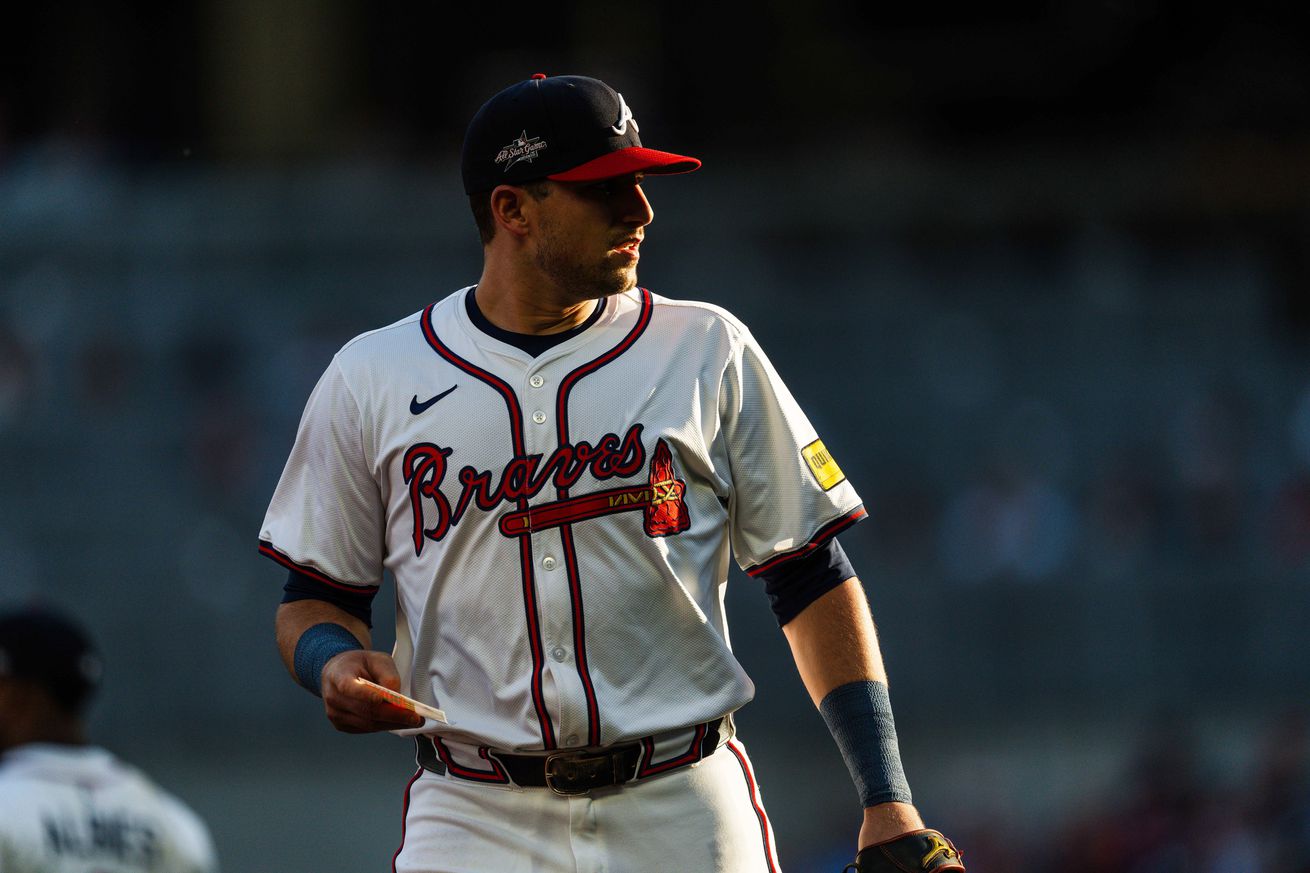
He’s got about two-thirds of the season to show he’s turned a corner
Austin Riley’s defense is a fun topic for me. I occasionally get the odd disgruntled e-mail in what I imagine hearkens back to the hoary days when people sent letters to the editor or whatever, and in years past, the most common topic of these e-mails has been “Austin Riley is a great defender and you, sir, are an idiot.”
Riley has played his whole career in the Statcast era, which means we have OAA and its derivative defensive value metrics for every season. What we see, right now, is this:

Since the innings at third base vary, let’s put them on a per-1,000 innings basis, focusing only on third base and only on seasons where he had at least 100 innings at the position. We get:
- 2020: -8/1,000 innings
- 2021: -3/1,000 innings
- 2022: -4/1,000 innings
- 2023: 0/1,000 innings
- 2024: -3/1,000 innings
- 2025 so far: +5/1,000 innings
The story before this season was pretty clear: leaving aside some growing pains early, Riley had settled into “below average defensive third baseman territory” before a 2023 season where he pulled himself up to average defensive performance. However, he couldn’t sustain that in 2024, reverting right back to his 2021-2022 form.
But, so far this year, he’s been killing it. Or, at least, he was.
Looking more granularly, Riley’s +2 OAA-based runs comes from April; he’s at zero for May, and that probably includes a debit for botching an easy play last night that ultimately led to the Braves’ downfall late. It’s not like Riley is a stranger to good defensive months, either. He had similar positive marks in April and May 2024, June through August 2023, August and September 2022, and even September 2021, where amid a mostly-horrid defensive year, he had an absurd +7 OAA in just that one stretch alone.
In short, we probably don’t really know if Riley has turned any kind of defensive corner at this point. We know that he’s not consistently, perpetually bad — he just doesn’t sustain his decent defensive stretches for long enough to counterbalance the other periods of subpar defensive play. But he hasn’t had one of those subpar stretches yet this season, so it’s a bit hard to tell. On the flip side, though, Riley is running harder than ever this year, so maybe there’s some increased athleticism he’s been able to tap into that might help him defensively.
A couple of other notes:
- Reviewing Riley’s success on different types of plays doesn’t yield much clarity. His OAA so far has been earned when coming in on the ball and with lefty batters at the plate. His general issues defensively have been moving to his left, which is why the Braves don’t position him on the line, I guess — and there’s no real indication he’s gotten any better in that direction.
- Riley’s own OAA aside, his actual success rate is not very high, which speaks to the Braves’ positioning moreso than his talent. The only time he had success rates lower than his current 70 percent of plays made was in 2020 and last year; 2020 was the only year in which his positioning-based estimated success rate was lower. This might balance out in time, but if it doesn’t, the Braves could probably stand to think a bit harder about where they place him.
Daily Notes
Record: 21-22
Yesterday’s wOBA and xwOBA: .293 / .317 (Season rank: 16th | 15th)
Yesterday’s wOBA and xwOBA allowed: .353 / .384 (Season rank: 12th | 13th)
Yesterday’s homers: 0
Yesterday’s homers allowed: 0
Record when out-xwOBAing: 14-9 (League: 476-164)
Record when out-xwOBAed: 7-13 (League: 164-476)
Record when out-wOBAing: 18-2 (League: 546-96)
Record when out-wOBAed: 3-20 (League: 96-546)
Record when outhomering: 9-3 (League: 333-93)
Record when outhomered: 4-12 (League: 93-333)
